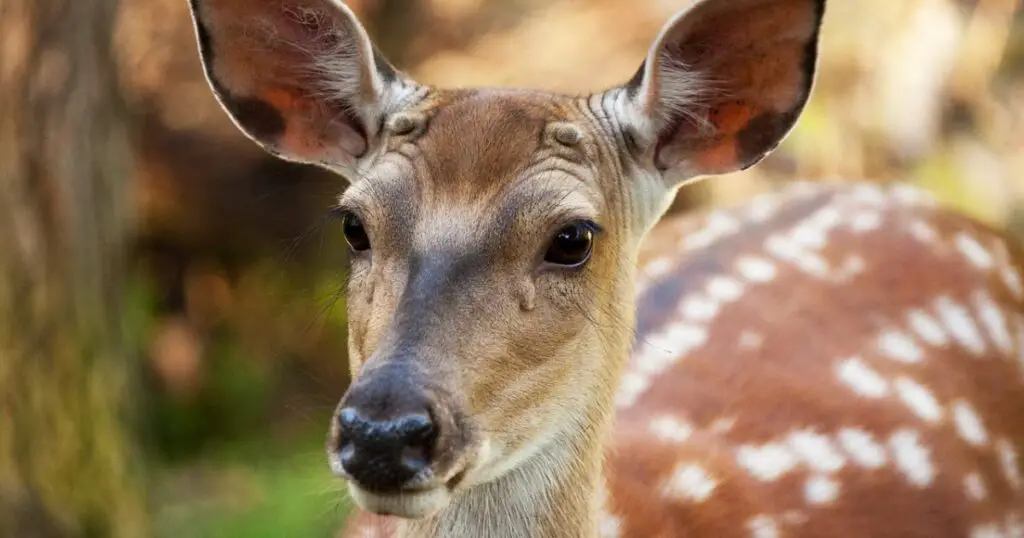Have you ever wondered whether female deer have antlers? Maybe you’ve noticed that female deer don’t have antlers in the local species you’ve seen or learned about, but what about the many other deer species found around the world? Do female deer have antlers in other locations?
In this article, we will explore whether females grow antlers in certain species of deer.
We will also take a look at the evolutionary purpose of antlers and explain some of the reasons why some female deer have antlers and others do not.
Do Female Deer Have Antlers? [Answered]
Reindeer are the only deer species in which females have antlers. One reason for this is the fact that reindeer must compete more vigorously for food in the cold regions in which they live. They use their antlers to dig in the snow and expose their food source.
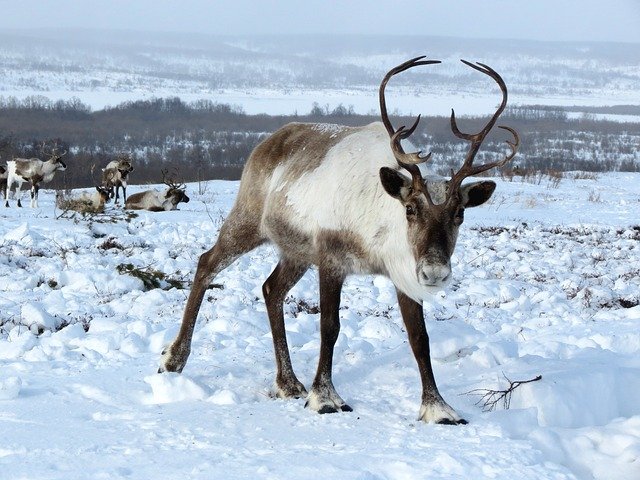
Having especially large antlers also allows a female reindeer to intimidate reindeer with smaller antlers, keeping them away from their precious food source.
Like with other deer, reindeer antlers are shed each and every year. With male deer, antler shedding occurs in later periods of autumn, after the rut. But Reindeer have specifically evolved to survive in harsh and very cold environments.
Female reindeer keep their antlers all the way until the spring. This is because it is important for the female to maintain access to nutrition during their pregnancy, which occurs in winter. They need their antlers to dig and forage for food.
Nutrition and its Impact on Antler Growth in Deer
It is possible to see female reindeer that do not have antlers. This sometimes happens in areas where the food supply is especially poor.
Growing antlers takes a lot of a Reindeer’s energy supply and reindeer (like other deer) won’t grow antlers without proper nutrition.
Did you know that caribou is simply another name for reindeer? This species is referred to as Reindeer in Europe and Caribou in North America (except at Christmas, when people around the world are all about Reindeer).
The only exception to this region-specific nomenclature is if the caribou is domesticated, in which case they are called Reindeer … even in North America.
In proportion to body size, the reindeer (or caribou) has the heaviest and biggest antlers of every deer species still in existence.
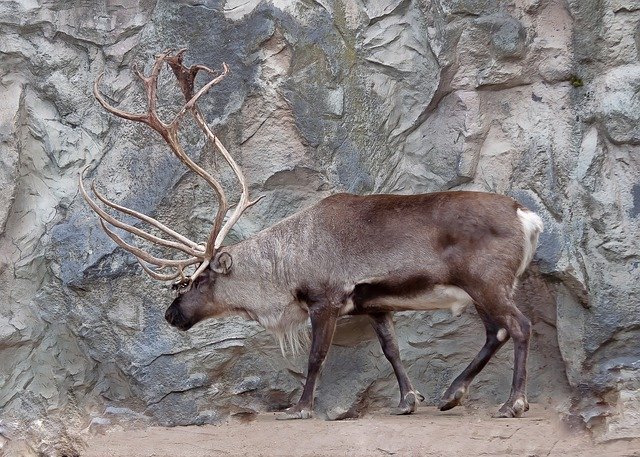
Male reindeer tend to have larger antlers than females, with antlers as long as 51 inches in length. Females tend to have antlers up to about 20 inches in length.
Whitetail Deer
What about White Tailed Deer? Do female deer have antlers in this species?
Although female whitetail deer do not have antlers as a rule, it is possible to see a doe of this species with antlers of some sort on very rare occasions.
There are two circumstances in which a whitetail doe might have antlers.
- One type of whitetail doe with antlers may have antlers always covered with velvet. This type of doe will often have an entirely complete female reproductive system, meaning that it can become pregnant and give birth to baby deer (also known as fawns).
- The other type of whitetail doe with antlers is designated as between the two sexes. They’re sometimes called pseudo-hermaphrodites. Their antlers are polished, like you see with other deer antlers after they have shed their velvet. This type of deer has male reproductive organs internally and female ones externally. Female whitetail deer with antlers have excessively high testosterone levels.
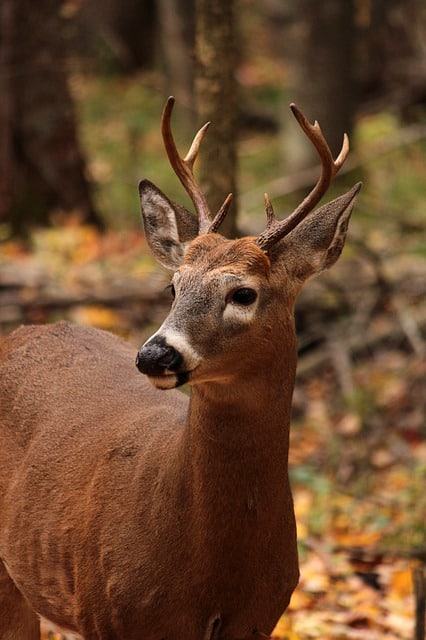
As mentioned, it’s very rare for a female whitetail deer to have antlers. Scientists have estimated that it may be around 1 in 10,000.
Why Did Deer Evolve to Have Antlers?
There have been several different hypotheses put forward about why deer evolved to have antlers.
We’ll talk about the three most common theories here:
- Antlers help to dissipate body heat
- Male deer attract females with big antlers
- Antlers are used to fight and earn territory and breeding rights
Is it Hot in Here?
One theory about why deer have antlers is that they are useful in dissipating body heat. This is thought to be especially important when the antlers are in the growth stage, as this is the time when they’re especially vascularized.
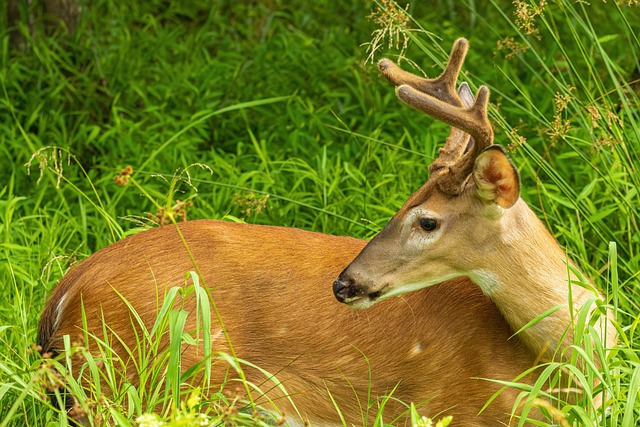
A problem with this theory is that if it were valid, antlers in all species would grow during the hottest months of each year.
There are species of deer, such as the Roe Deer found in Europe, that grow their antlers in the winter.
Also, some deer found in hot climates have very small antlers.
Another problem with this hypothesis is the fact that females of most species completely lack antlers. It doesn’t make sense for males to have a special advantage with heat dissipation while females don’t.
Is Bigger Better?
The second major hypothesis is that males grow antlers to attract females.
While many people think that this is true, there is no definite evidence that this theory has validity. However, it is true that female deer tend to prefer older and larger males and that those individuals tend to have larger antlers, though deer antlers don’t necessarily get bigger each year.
Want to Fight?
A third theory, and the one considered the most valid, is that antlers are used for combat, especially between males.
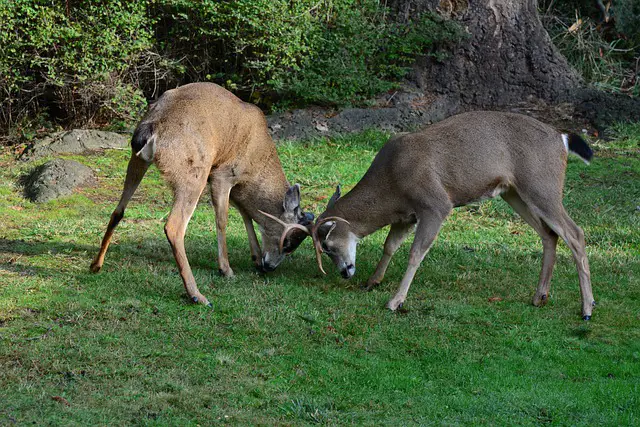
Males fight with each other during mating season (also called “the rut”) to intimidate rivals and take over territory. This allows males to use their antlers to gain new territory and access to more females.

